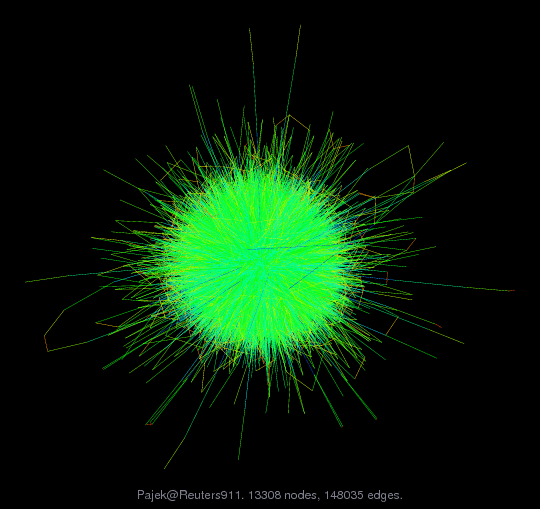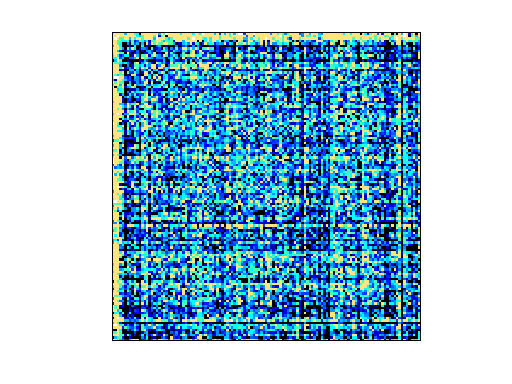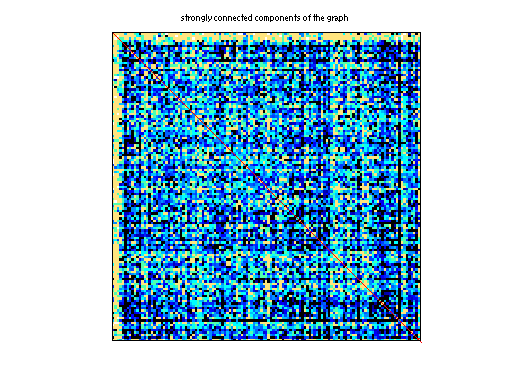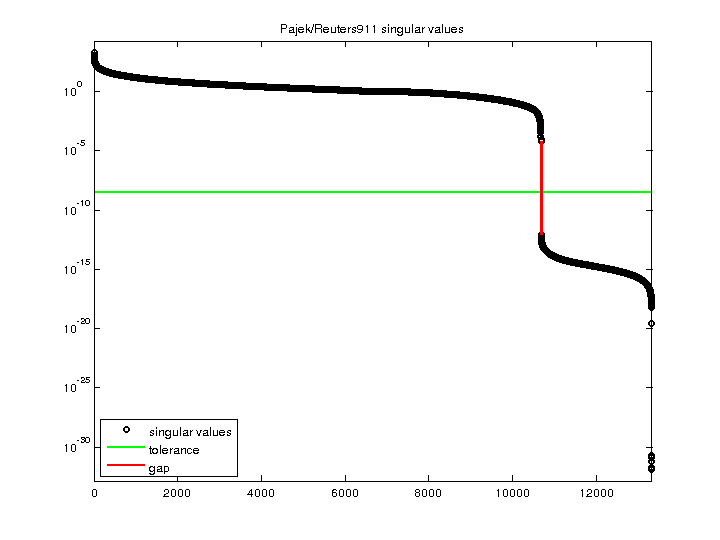
Matrix: Pajek/Reuters911
Description: Pajek network: Reuters news, Sept 11 to Nov 15, 2001
 |
| (undirected graph drawing) |
 |
 |
| Matrix properties | |
| number of rows | 13,332 |
| number of columns | 13,332 |
| nonzeros | 296,076 |
| # strongly connected comp. | 22 |
| explicit zero entries | 0 |
| nonzero pattern symmetry | symmetric |
| numeric value symmetry | symmetric |
| type | integer |
| structure | symmetric |
| Cholesky candidate? | no |
| positive definite? | no |
| author | S. Corman, T. Kuhn, R. Mcphee, K. Dooley |
| editor | V. Batagelj, A. Mrvar |
| date | 2001 |
| kind | undirected weighted graph sequence |
| 2D/3D problem? | no |
| Additional fields | size and type |
| Day | cell 66-by-1 |
| nodename | full 13332-by-29 |
Notes:
------------------------------------------------------------------------------
Pajek network converted to sparse adjacency matrix for inclusion in UF sparse
matrix collection, Tim Davis. For Pajek datasets, See V. Batagelj & A. Mrvar,
http://vlado.fmf.uni-lj.si/pub/networks/data/. This is the "Days" network.
------------------------------------------------------------------------------
The Reuters terror news network is based on all stories released during 66
consecutive days by the news agency Reuters concerning the September 11 attack
on the U.S., beginning at 9:00 AM EST 9/11/01. The vertices of a network are
words (terms); there is an edge between two words iff they appear in the same
text unit (sentence). The weight of an edge is its frequency. The network has
n=13332 vertices (different words in the news) and m = 243447 edges, 50859
with value larger than 1. There are no loops in the network.
Steven R. Corman, Timothy Kuhn, Robert D. Mcphee and Kevin J. Dooley
(2002): Studying Complex Discursive Systems: Centering Resonance Analysis of
Communication.
------------------------------------------------------------------------------
When converted to a sparse adjacency matrix for the UF Sparse Matrix
Collection, Day{i} is the graph of the ith day. The diagonal entry
Day{i}(k,k) is 1 if word k appears in any news on the ith day. Note
that it may not appear in conjunction with other words in the same
sentence on that day. The sum of nnz(tril(Day{i})) for i=1:66 is 243,447.
The overall matrix A is the sum of the Day{i} matrices. A(i,j) is the number
of times words i and j appear in same sentence (for i not equal to j). A(k,k)
is the number of days the word k appears in any news report.
Note that this network has been renamed to Reuters911 here.
------------------------------------------------------------------------------
| SVD-based statistics: | |
| norm(A) | 1904.12 |
| min(svd(A)) | 1.37201e-32 |
| cond(A) | 1.38783e+35 |
| rank(A) | 10,682 |
| null space dimension | 2,650 |
| full numerical rank? | no |
| singular value gap | 6.33786e+07 |
| singular values (MAT file): | click here |
| SVD method used: | s = svd (full (A)) ; |
| status: | ok |

For a description of the statistics displayed above, click here.
Maintained by Tim Davis, last updated 12-Mar-2014.
Matrix pictures by cspy, a MATLAB function in the CSparse package.
Matrix graphs by Yifan Hu, AT&T Labs Visualization Group.